Petra - 18th to 20th December 2007

The flight from Gatwick to Aqaba was uneventful and on arrival we transferred to a bus that took us to the town of Wadi Musa which means 'Valley of Moses'. Our hotel was just a few hundred yards from the main gate that allows entry to the ancient city of Petra.
I took the option of the usual buffet dinner at the hotel and decided on an early night, as we were to be given a 6.30am wake up call to ready us for breakfast and our first excursion.
Entry to Petra as of December 2007 is 22JD for one day; but a better option at 26JD is a two day pass allowing further exploration of the wonders of the city.
Our tour guide, Ahkmed, was a rather dry fellow and not at all amused that one of our group was late (more on our tour guide later in my story).
Petra was created by the Nabataeans, an enigmatic tribe of Arab people, in the centuries before the birth of Christ. I say enigmatic because little is really known about the Nabataeans and their culture apart from a few inscriptions and graffiti. Many of the stories told by Greek and Roman historians of the time were either their own inventions or Nabataean tales used to hide their success.
In the three centuries before Christ, the area was a crossroads for trader caravans. Petra provided a perfect place to stop thanks to the natural defensive capability and the Nabataean water management system, that used pipes and channels cut in the rock to move water around the city.
The Nabataeans provided shelter and protection for traders and their goods, for a price! This generated great wealth and enabled them to carve the impressive buildings and tombs that we can marvel at today.
As the Roman Empire expanded trade routes changed, and over time Petra lost it's importance. Over the centuries Petra was slowly forgotten until it was lost to the Western world around the 14th century. It was not until 1812 that Petra was 'rediscovered', by a Swiss traveller, Johann Ludwig Burckhardt. Persuading his guide to take him to the area and pretending to be an Arab from India wanting to make a sacrifice at the tomb of the prophet Aaron, Burckhardt's notes and sketches generated great archaeological interest.
Returning to the present day... having collected our tickets we strolled along the path to the entrance of the Siq, a distance of almost a mile. There are Bedouins with horses and buggies for those that prefer not to take the 2 mile walk from the main gate through the Siq, but you may miss some of the sights on the way.
On the walk to the Siq one of the first things you see are the Djin Blocks, followed by the Obelisk Tomb. Eventually you arrive at the dam, built by the Nabataeans to prevent flash floods rushing through the Siq and rebuilt by the Jordanian government.
The Siq is a narrow gorge in the limestone rock that leads you through twists and turns to Petra. Some parts of the Siq still have ancient limestone cobblestones, although it is now mostly sand.
After a little over a mile, a final turn reveals the first glimpse of the superb Treasury, or Al Kazneh through the gorge. Used in the final sequence of Indiana Jones and the Last Crusade as the resting place of the Holy Grail, the Treasury is indeed a splendid monument. Carved out of the sandstone rock face around the 1st century BC, no one knows exactly what the purpose of the Treasury was. It is generally believed that the Treasury was a temple or royal tomb. The treasury name came from the Bedouin belief that there was hidden treasure in the central urn.
The facade has two levels, with decorative columns and sculptures. Through the central doorway there is an inner chamber with three smaller chambers to the rear. The notches that run down the sides of the Treasury, finishing about 35ft above ground, are another intriguing element of the design. Some people believe they were used to hold scaffolding, even though the Nabataeans cut their buildings from the top down.
The Treasury of course is just the beginning. Walking from the Treasury, you pass the Street of Facades, the Theatre, and a range of Royal Tombs. The first of the tombs is the Urn Tomb. Built high on the side of the mountain, it is approached by a number of flights of steps. Next to the Urn Tomb is the Silk Tomb, Corinthian Tomb, Palace Tomb and Sextus Florentinus Tomb.
From the tombs the Colonnaded Street runs to a welcoming rest stop, with two restaurants and two museums.
After a chance to eat, drink and rest, there is an opportunity to climb around 900 steps to the Monastery, although there are plenty of people offering donkeys and even camels to speed your journey to the top. I was somewhat hesitant to take a donkey, but was eventually persuaded and I'm really pleased I did. The donkey was comfortable and made a speedy ascent, much faster and less exhausting than the estimated hour climb.
The Monastery is majestic and beautifully carved, larger than the Treasury but less ornate. It is believed to have been a site of pilgrimage although in the 4th century was reused as a Christian chapel, giving rise to the Monastery name.
After the climb down from the Monastery and a walk back through the Siq to the hotel, it was time for a delicious dinner at the Red Cave Restaurant.
The next day there was another early start to the site of Little Petra, or Al Beidha. This miniature version of Petra has a small siq and contains many well preserved tombs. The afternoon was free to explore, and in the evening there was an optional tour of 'Petra by Night'. Unfortunately I found Petra by Night less than exciting. Candles lit the route through the Siq to the Treasury, that VJV claim is 'transformed into a world of magic'. With only a few candles and the moon to light the site, it was, quite simply, dark. The promise of 'Bedouin stories and folklore' also failed to materialise, and the obligatory buffet dinner, although decent, was rushed due to the chance of a rainstorm. Not an experience I would recommend to anyone, although I did hear that some of the girls had enjoyed it (perhaps large quantities of alcohol helped?). I would recommend a second early morning visit to Petra, taking time to explore more of the paths and views.
As day four approached we packed our cases and prepared for more adventure...

The Djin Blocks on your right on the way to the Siq
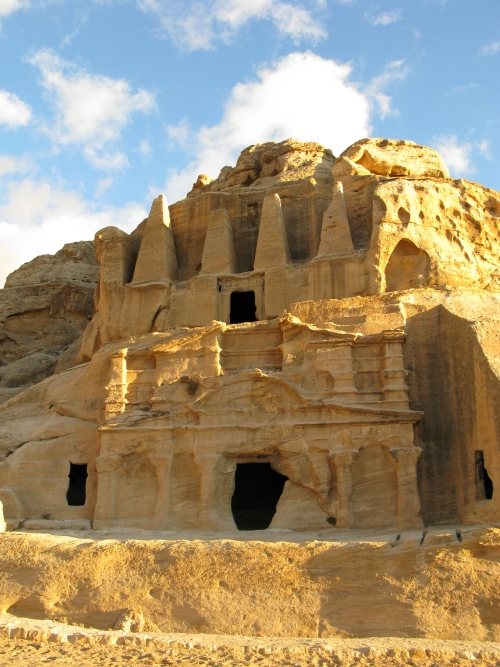
The Obelisk tomb, on your left beyond the Djin Blocks
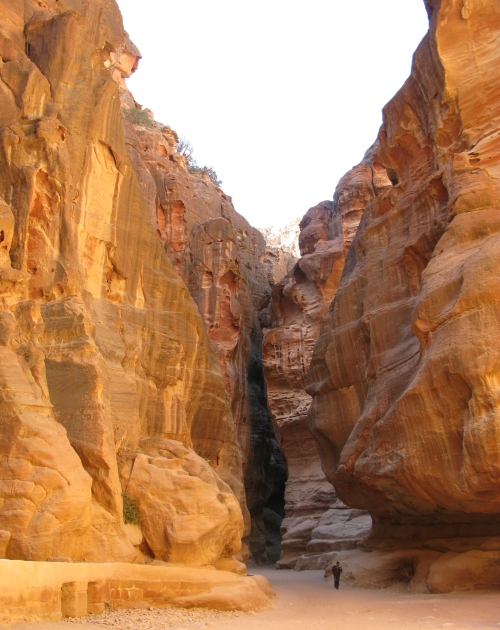
The entrance to the Siq
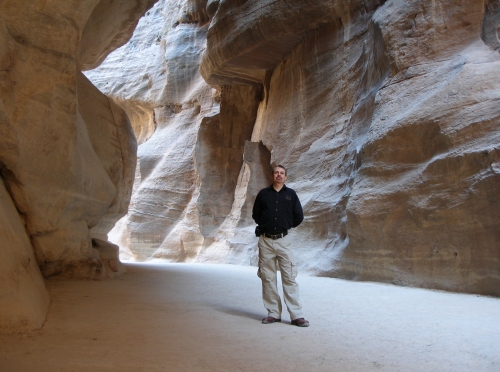
A chance to pose for a photo on my way through the Siq

The end of the Siq approaches offering a glimpse of Petra's Treasury

The amazing Treasury, or Al Kazneh

A camel waits for you to take a ride near
the Treasury
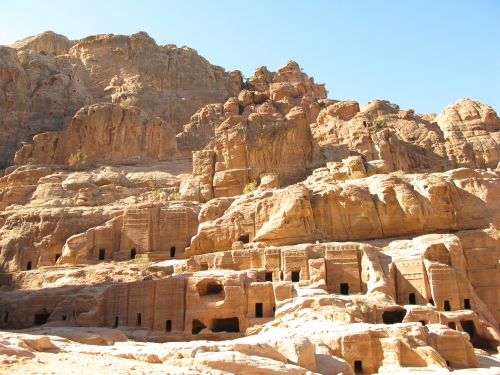
The Street of Facades
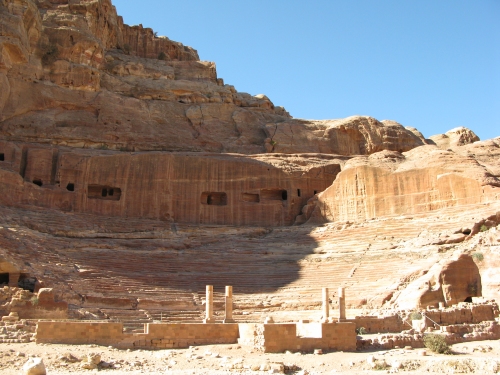
The Theatre
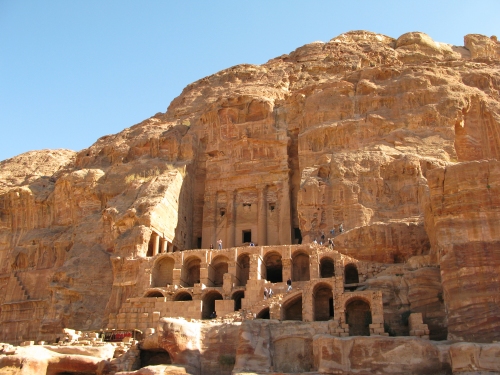
The Urn Tomb looms high above
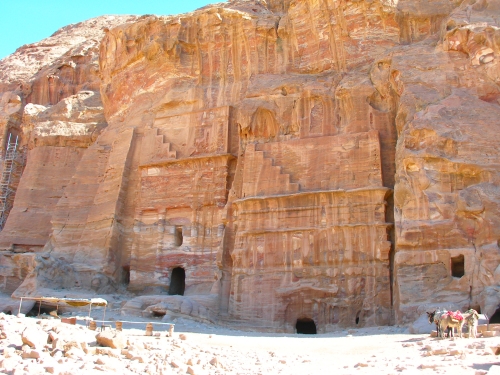
The Silk Tomb

The Palace Tomb

The Colonnaded Street

The glorious Monastery
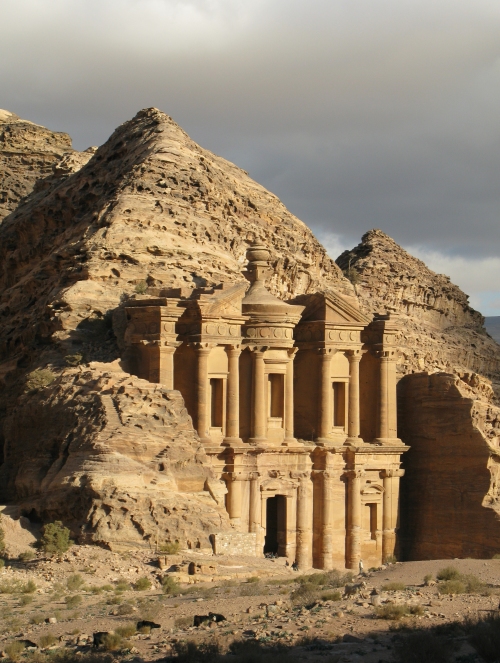
The Monastery from a scenic viewpoint

Admiring the view
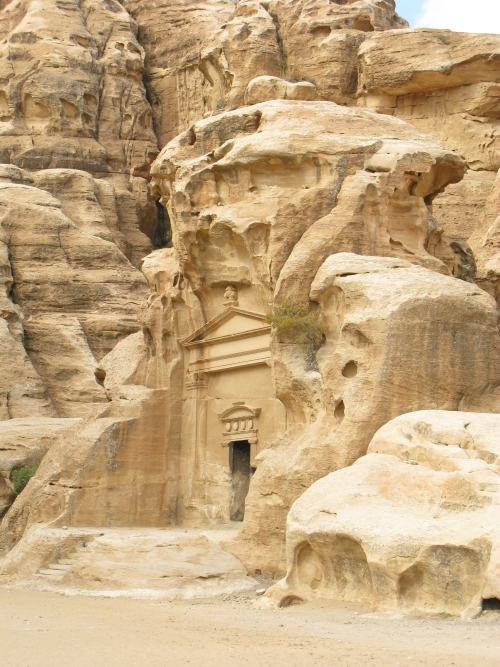
The first tomb at the entrance to Little Petra
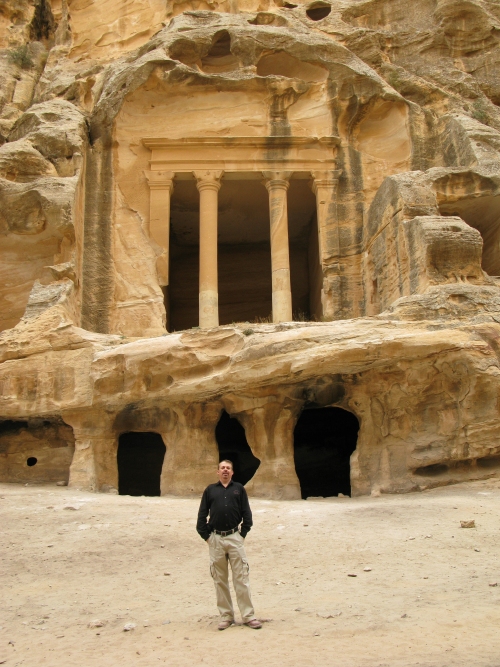
Posing by one of the more magnificent monuments in Little Petra